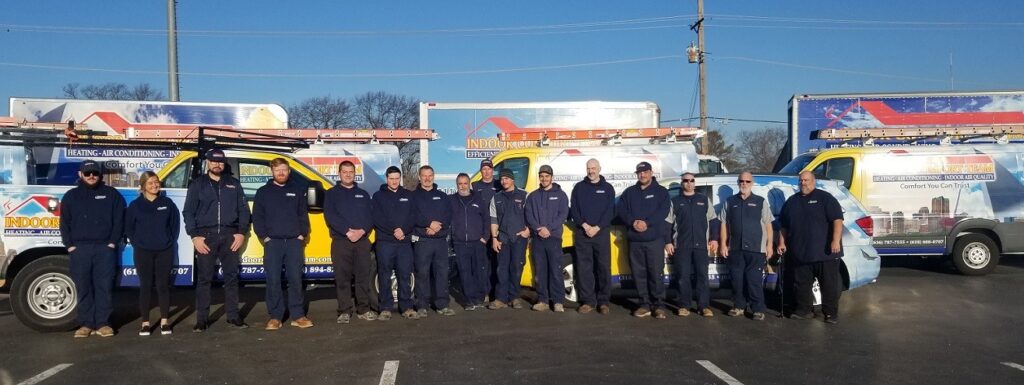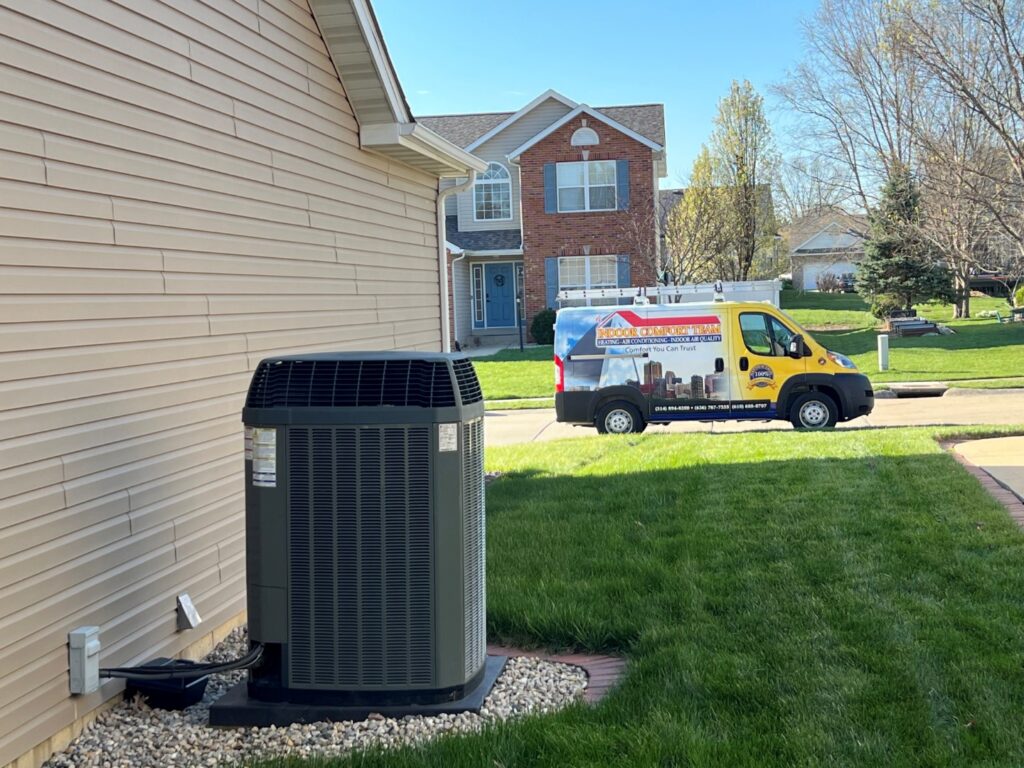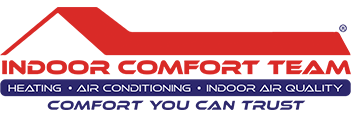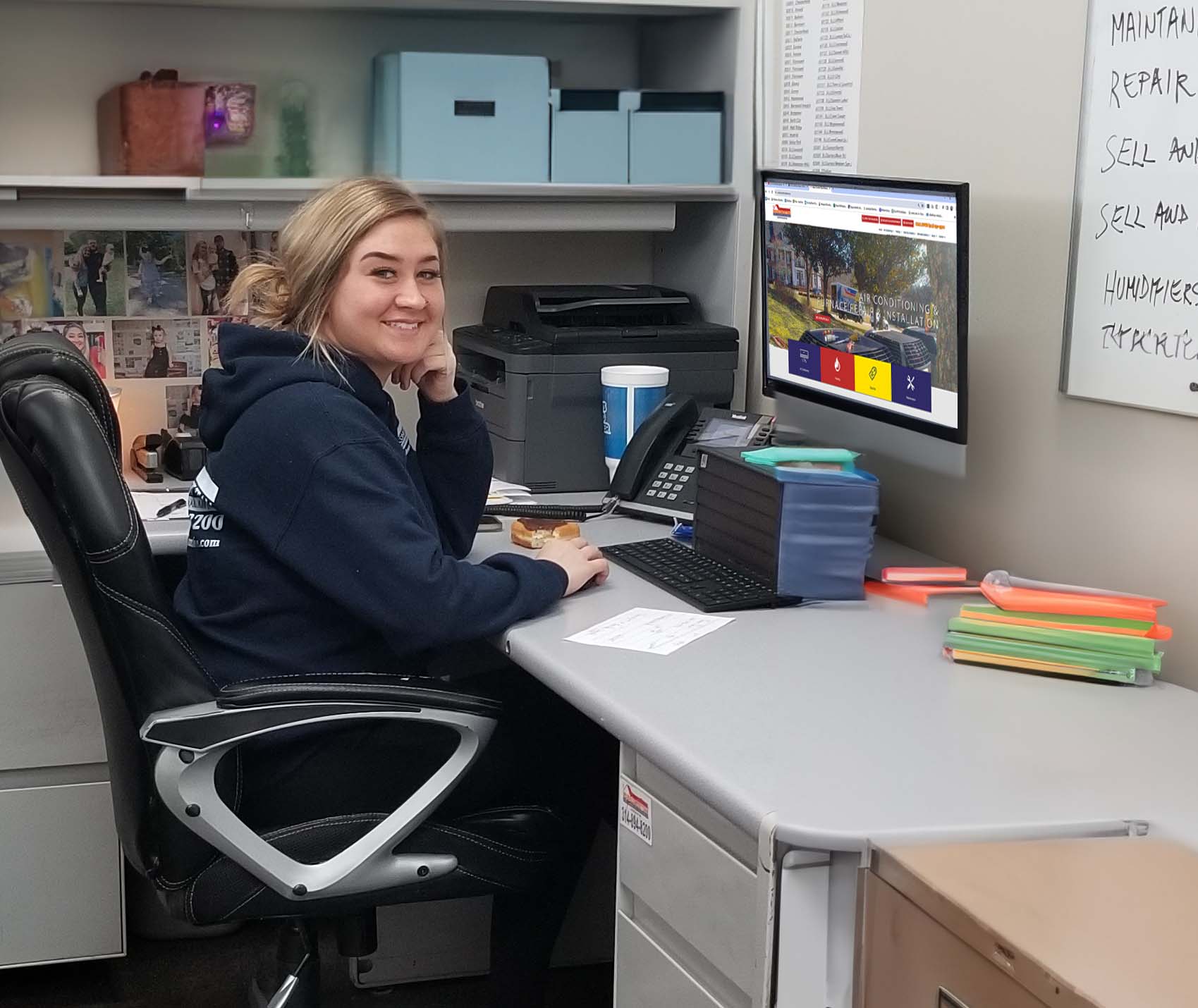Your furnace is essential for keeping your home warm and comfortable during the chilly months in St. Louis. But what happens when your once-quiet system starts making strange noises? Unusual sounds like banging, rattling, or whistling can be more than just a nuisance—they’re often a sign that something isn’t right.
At Indoor Comfort Team, we’ve been helping homeowners on both sides of the river in St. Louis since 1979, and we know how unsettling furnace noises can be. Before you call in the professionals, there are a few troubleshooting steps you can take to identify the cause and possibly resolve the issue yourself. Let’s explore what those sounds might mean and what you can do about them.

Common Furnace Noises and What They Mean
Your furnace making new or unusual sounds may be a cause of concern. With cooler weather upon us, you may worry that your furnace will suddenly stop working or potentially create a safety hazard.
In some instances, furnace noises could indicate that your equipment needs replacing. The average lifespan of a furnace is between 15 and 20 years. If your equipment has surpassed its expected lifespan, it may be time for an updated model.
Location also plays a key role in how well a furnace operates. While summers tend to be hot, wet, and humid in St. Louis, winters are often very cold, windy, and snowy. These external factors can affect system performance and contribute to new noises.
Troubleshooting a furnace noise requires you to identify where in the system the sound is coming from, what triggers the noise, and the types of noises you’re hearing. Some of the most common noises made by furnaces include:
Whistling
One of the most common sounds made by furnaces in need of repair is a whistling noise. This whistling may be low and subtle or high and shrilling, depending on the underlying cause. Start by locating the source of the whistling. If you only hear it in one room, it could be due to an air leak or blockage in the ductwork. In some instances, the cause could be a partially closed air duct.
If you recently installed a new furnace in your home or business, the velocity and volume of the air being pushed through the ductwork could potentially expose gaps in the vents, leading to a whistling sound as air escapes. If the cause of the whistling is found to be a leaky air duct, your HVAC technician may recommend sealing and insulating your ducts to stop the noise and prevent further air loss.

Banging
Loud bangs coming from your furnace can be alarming, especially if your furnace had previously been quiet. The first problem to consider when you hear banging is an ignition problem. Once your thermostat falls below the set temperature, the gas valve is triggered to force the system to turn back on.
When the system is operating properly, the ignition system or pilot light should immediately ignite the gas. However, gas can build up in the combustion chamber, creating a loud bang upon ignition. This sound can travel through the ductwork into the home, making it sound even louder. A trained technician can determine the cause of this ignition system problem, which can range from a dirty burner to low gas pressure.
Scraping
A scraping sound coming from your furnace will often sound like two inner components are running against one another, like metal on metal. In many cases, a scraping sound is the result of a blower wheel problem. The blower wheel is a key component of the blower assembly that helps circulate air throughout the system. It is typically made of metal or plastic and consists of blades that spin when the blower motor is activated.
There are several reasons why a blower wheel may be making a scraping sound. First, it could simply be broken and need replacement. Over time, the wheel can loosen, putting it at risk of shifting and hitting other components, such as the blower casing. If you hear sudden scraping coming from your furnace, contact an HVAC professional right away to avoid unnecessary wear and tear to your system.

Rumbling
It’s not unusual to hear a low roaring or whooshing sound when your furnace turns on. However, if these sounds turn into a louder rumbling noise, there may be a bigger issue at play. Rumbling that begins and continues even after the completion of the heating cycle may be due to a problem with the burner.
After a cycle ends, oil or gas can remain in the combustion chamber and continue burning. This often creates a rumbling sound that is more than just a noisy nuisance. Having excess fuel in the combustion chamber can cause a dangerous build-up of carbon monoxide that can leak into the home, creating a serious safety hazard.
Screeching
High-pitched screeching can have several causes but typically requires a solid diagnosis by a trained technician. Screeching can be caused by a problem with the blower motor, such as bearings within the motor that have dried out over time. This is usually a simple fix and consists of lubricating the bearings.
Another common cause of screeching within a furnace is a broken belt. A broken belt can be due to normal wear and tear, a misalignment, incorrect tension, overheating, or dirty or damaged components. A technician can assist you with examining and replacing the belt.

Popping
When the furnace starts a heating cycle, the blower motor begins distributing warm air through the ducts of the building. This process is typically quiet but, in some instances, you may hear unusual popping noises when the furnace is activated. This popping noise is usually due to inflation in the air ducts. When the warm air travels through the cold ducts, the metal expands to accommodate the temperature change.
Another common source of popping with your heating system is contaminated gas burners. Over time, sediment can collect on the burners, especially as your equipment gets closer to its expected lifespan. If this debris is not regularly removed during annual tune-ups, gas can collect and create holes in the heat exchanger, which can lead to popping noises.
Preventative Maintenance & Professional Solutions
Regular professional maintenance for heating systems is essential to ensure that they operate efficiently, safely, and effectively throughout the cold months. A well-maintained furnace can extend its lifespan, improve energy efficiency, and prevent costly repairs down the line. In addition, routine checks can help identify potential safety hazards, such as gas leaks or carbon monoxide issues, which could pose serious health risks to your household or business.
A heating system that undergoes regular servicing will maintain optimal performance, meaning it will heat your home more evenly and reduce energy consumption. This not only helps with comfort but also lowers utility bills. In addition, maintenance ensures compliance with any manufacturing warranties, which often requires regular servicing.
Give us a call at (314)230-9542 or visit https://www.indoorcomfortteam.com/services/maintenance-agreements/ to learn more about our VIP Club Plan.

What to Look for Before Calling in the Professionals
If you’re interested in examining your own heating equipment before calling in the professionals, there are a few places to look. First, inspect the air filter. A dirty or clogged air filter can restrict airflow, reducing effective heating and potentially damaging the system. If the filter is dirty, replace it with a new one.
Want to skip the hassle of maintaining your own furnace? At Indoor, we offer our reliable VIP Club Plan. VIP members can receive a wide range of benefits, such as free air filter installation, equipment checks, air conditioning condenser cleaning, and much more. Also, ask about our 0 percent interest financing plans and other special offers, including special discounts for seniors, military, and veterans.
Next, check for airflow issues. If some rooms are not getting enough heat or the air feels cool, check the vents in the home for blockages and ensure that all registers are open. If possible, inspect the ductwork for signs of damage, gaps, or leaks.
Finally, check the flame sensor or pilot light. Gas heating systems typically have a pilot light that can be seen by looking inside the furnace, often at the bottom near the burner assembly. If you discover that the pilot light is constantly going out, there may be a larger issue that requires a professional diagnosis.
When to Call in an HVAC Technician for Repairs
While some issues can be resolved with basic troubleshooting, others may indicate that it’s time to call in a professional. First, if the heating system isn’t turning on at all, it could be due to a problem with the thermostat, ignition system, or electrical components. Call in an expert to quickly diagnose the problem and get your system back up and running.
Inconsistent temperatures may also warrant a call to the HVAC company. The heating equipment may go off and on frequently or cause uneven temperatures in the home. Air blowing from the vents may also feel cold, indicating that there is a problem with the thermostat, pilot light, or internal components of the furnace.
Increased energy bills, coupled with other issues like strange noises, could point to an inefficient furnace. You may notice a sudden spike in your energy costs that have no known cause. Increased energy bills may have a variety of causes, such as worn-out parts, dirt buildup, or a need for immediate maintenance.
Finally, if you notice a gas odor in your home or business, contact a professional right away. A gas odor near your furnace is a serious safety issue that could indicate a gas leak. Your HVAC professional will likely recommend that you evacuate the area and turn off the gas supply until the problem can be resolved.
Schedule Service with the HVAC Experts at Indoor Comfort Team
Strange noises from your furnace can be unsettling, but with a little troubleshooting, you may be able to address minor issues before they escalate. Remember, a well-maintained furnace runs more quietly and efficiently, so it’s always a good idea to stay on top of regular maintenance.
If the noise persists or you’re unsure about the cause, don’t hesitate to call the experts at Indoor Comfort Team. With over 40 years of experience serving St. Louis and the surrounding areas, we’re here to ensure your home stays warm, comfortable, and quiet all winter long. Contact us today to schedule a service or learn more about how we can help!





